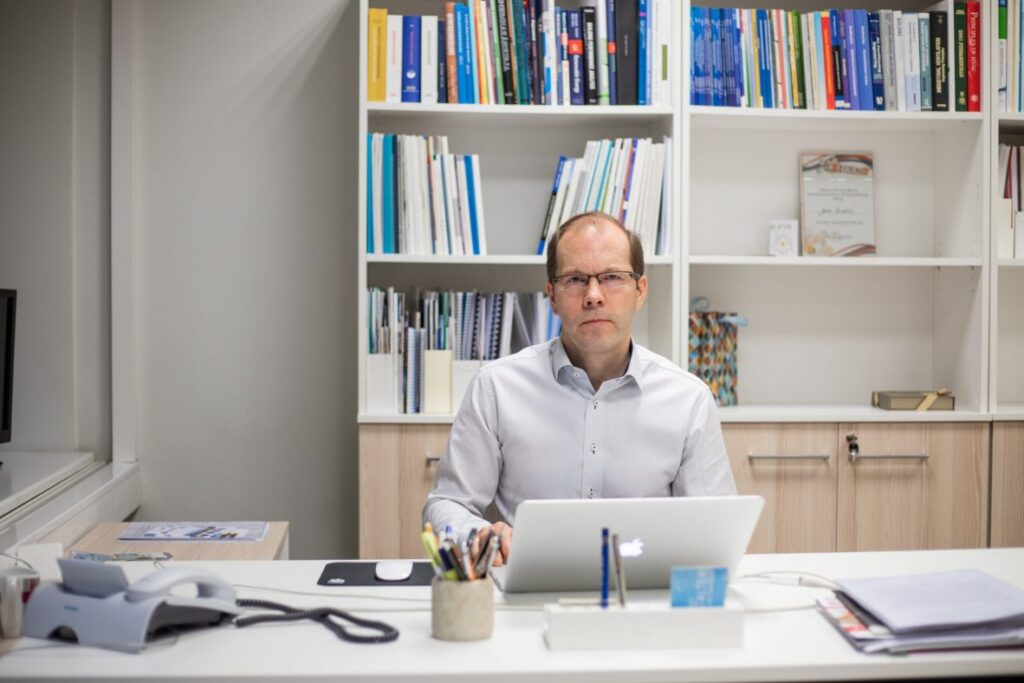Jarek Kurnitski was recognised for his international work in preventing the spread of COVID-19. The Federation of European Heating, Ventilation and Air Conditioning Associations REHVA acknowledged the work of Member of Academy Jarek Kurnitski as the leader of the COVID-19 expert group in the preparation of European guidelines on ventilation.
European guidance material for the operation of building ventilation systems, and better ventilation during the COVID-19 crisis, translated into a total of 13 languages, proved to be internationally effective and reached the desktop of many governments. The guide, which has been downloaded several hundred thousand times, has been used in almost every EU country during the crisis, as well as outside of Europe.
REHVA and Kurnitski were at the forefront
The first version of the guide was published by REHVA on March 17, 2020, based on the concept of aerosol spread of the virus, which was in conflict with the World Health Organization (WHO) and several other organizations. This triggered a global debate, which together with the subsequent research confirmed the dominance of aerosol dispersion, both in close contact and beyond.
In March 2020, REHVA and Kurnitski were the first to speak from the point of view of aerosol physics and the experience of the previous SARS-CoV-1 virus, that virus infection by inhalation of fine particles or aerosols formed by evaporation of exhaled droplets must not be ruled out. Aerosols smaller than 5–10 microns fly in the air and are able to travel long distances. Therefore, keeping a distance of 1–2 m is not sufficient, but in addition, rooms must be well ventilated to avoid the formation of high concentrations of virus particles. Stuffy and overcrowded indoor spaces with poor ventilation are considered to be the most dangerous – many cases of infection in such places have been reported in the scientific literature. The size of SARS-CoV-2 virus is 0.1 microns (for comparison: 1 m = 1,000,000 microns) and can be found inside exhaled droplets starting at 0.5 microns in diameter and ending at 2 millimetres, but no particles larger than 100 microns enter the human airways. The virus remains active in indoor air for up to 3 hours and on surfaces for 2–3 days, but there are no known cases of infection with this virus through surfaces. To date, the guidance material has reached version 4.1, including a number of appendices and, among other things, a ventilation calculator designed to assess the risk of infection.
Inspection of ventilation systems required
In Estonia, REHVA's instructions have been implemented in the form of Regulation No. 8 of the Minister of Economic Affairs and Infrastructure on the Ventilation of Buildings (initial version 07.04.2020 and current version 29.11.2020) and a more comprehensive guide of the Consumer Protection and Technical Regulatory Authority. This has also launched a public debate on the need to improve school ventilation. Considering a possible third wave of the virus, Tallinn University of Technology has proposed the preparation of technical inspection reports for ventilation systems to certify the safety of buildings; the corresponding methodology was developed and piloted in cooperation with the Consumer Protection and Technical Regulatory Authority.
While REHVA usually presents recognitions at the gala of its annual meeting, this year it was cancelled due to the COVID-19 pandemic.
REHVA represents more than 120,000 engineers from 27 countries, and the recommendations are primarily intended for workplaces and other public indoor spaces.
